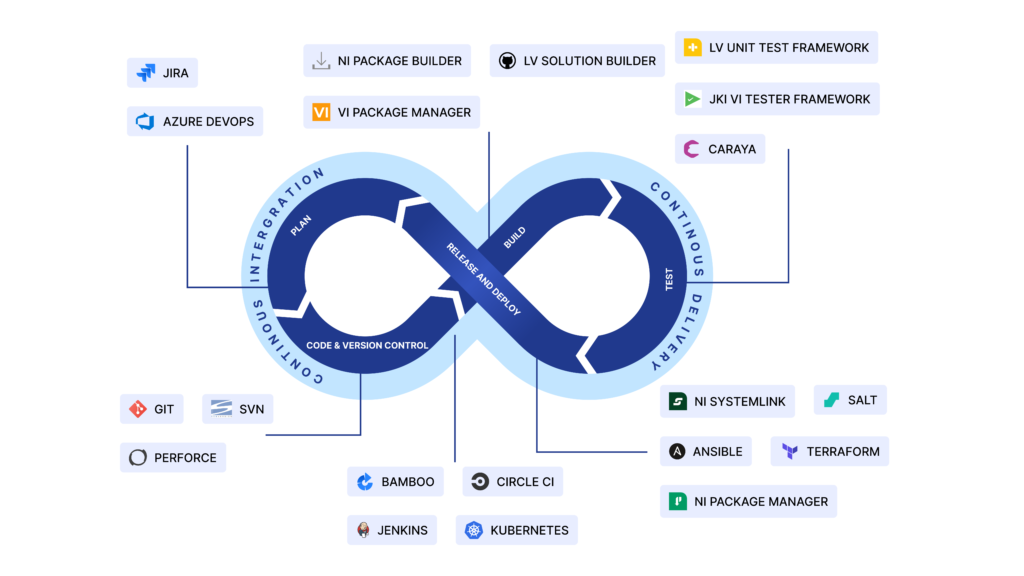Published on: 06-11-2024
Author: Uthrakumar Arumuganainar
LabVIEW has been the go-to programming language for Test & Measurement and Control Applications. But with increasing complexity, LabVIEW can benefit from adopting DevOps principles proven to improve and shorten the software development life cycle.
While DevOps has traditionally been associated with text-based programming languages, we have learned the merits of implementing DevOps in LabVIEW, even with its complexities, over the years. In this article, you’ll discover how DevOps principles can be applied to LabVIEW development, with a focus on key areas like Continuous Integration (CI), Continuous Deployment (CD), and automated testing. We’ll also briefly introduce some essential tools and best practices that can help tackle the unique challenges of implementing CI/CD in LabVIEW.
- How to Navigate the Key Pillars of DevOps Implementation in LabVIEW Environment?
-Continuous Integration (CI)
– Best Practices for Better Code Maintenance to Implement CI
-Continuous Testing
-Continuous Deployment (CD)
-Infrastructure as Code (IaC)
- How DevOps in LabVIEW Pays Off – A Case in Example
